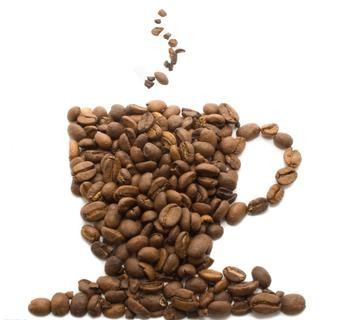High-quality coffee beans detailed description of mocha coffee beans
Mocha coffee (Cafe Mocha) is one of the oldest coffee, its history can be traced back to the origin of coffee. It is a mixture of Italian espresso, chocolate sauce, whipped cream and milk. Mocha gets its name from the famous port of Mocha. In the 15th century, the outward transportation industry of the whole coffee country in Central and East Africa did not flourish. Yemeni Mocha was a major commercial port near the Red Sea at that time. At that time, as long as the coffee was concentrated in the port of Mocha and then exported to the African coffee, it was collectively called mocha coffee. Although the emerging port replaced the status of the port of Mocha, the origin of mocha coffee remained during the period of the port of Mocha, and the coffee beans produced in these areas are still known as mocha coffee beans. Drinking coffee can relieve fatigue and help digestion.

Basic overview
Mocha (also known as mocha or mocha, which means Cafe Mocha in English) is a variant of Italian latte (Caf é Latt é). Like the classic Italian latte, it is usually made of 1/3 Caff è Espresso and 2/3 foam, but it is also mixed with a small amount of chocolate. Chocolate is usually added in the form of chocolate syrup, but some coffee selling systems are replaced by instant chocolate powder. Sometimes, whipped cream, cocoa powder, and cotton candy are added to add to the aroma of coffee and as a decoration. Unlike the Italian Cappuccino, there is no milk foam on the mocha. Instead, mocha coffee is usually topped with cream and cinnamon or cocoa powder. It is also possible to add sunflower honey powder to the surface as a decoration and add flavor. One variant of mocha is White Cafe Mocha, which uses white chocolate instead of milk and dark chocolate. In addition to white mocha, there are some variants that are mixed with two kinds of chocolate syrup, sometimes called "Zebras" and sometimes comically called "tuxedo mocha" (Tuxedo Mocha). In some parts of Europe and the Middle East, Moccaccino is used to describe Italian lattes with cocoa or chocolate. In the United States, mocaccio refers to an Italian cappuccino with chocolate.
The name Mocha Coffee comes from Mocha, a small town on the Red Sea in Yemen. This place monopolized the export of coffee in the 15th century, which had a particular impact on the coffee trade sold to the Arabian Peninsula. Mocha is also a "chocolate-colored" coffee bean (from Yemeni mocha), which makes people associate coffee with chocolate and develop chocolate espresso drinks. In Europe, "mocha coffee" may refer either to this drink or simply to coffee made from mocha beans.
Preparation method
[English name]: mocha coffee
[name]: Mocha
[materials]: 30ml Italian concentrate, right amount of chocolate sauce, right amount of fresh cream, right amount of milk
[method]: pour espresso and milk into a cup full of 7 minutes, squeeze cream and sprinkle with chocolate sauce.
[details]: guests can choose the cup they like at will, and the weight can be adjusted according to the capacity. Coffee can also be mixed coffee.
Dispute over place of origin
More than a hundred years ago, the outward transportation industry did not flourish throughout the coffee countries in Central and East Africa. Yemeni Mocha was a major export port near the Red Sea at that time. Most of the coffee produced in Africa was first transported to the Yemeni port of Mocha and then exported to Europe. Today, a hundred years later, African coffee countries have gradually developed their own export ports, which no longer rely on the port of Mocha, which has retreated inland because of the accumulation of silt. on the contrary, it is now the port of Mombasa in Africa, the port of Durban, the port of Beiva. All of them have become some emerging coffee export ports in Africa, but at that time, as long as the coffee was concentrated in the port of Mocha and then exported to Africa, it was collectively called mocha coffee.
There are many answers to this question. Some people say that mocha is a certain place of origin, and some people remember that mocha is sweet chocolate coffee. In fact, authentic mocha coffee is only produced in the Republic of Yemen in the southwest of the Arabian Peninsula, grows on steep hillsides at elevations of 3, 000 to 8, 000 feet, and is the oldest coffee in the world.
As early as more than 500 years ago, Yemen produced coffee in an ancient way. In the early 17th century, the first batch of Yemen coffee sold to Europe was exported through the ancient port of Mocha, which amazed Europeans. The delicious coffee shipped from the port of Mocha was called "mocha coffee", which is the origin of the name "mocha coffee".
The coffee produced in Yemen is the best, followed by Ethiopia (Ethiopia) mocha; mocha coffee belt smooth in the acid to strong acid, sweet, unique flavor, containing chocolate flavor; with the temperament of a lady, is a very characteristic pure coffee.
Mocha coffee shows a strong New York flavor in a small cup.
History of development
Mocha gets its name from the famous port of Mocha. Transportation in East Africa was very underdeveloped in the 15th century, but it produced the world's most precious coffee beans, which were gathered in the Yemeni port of Mocha and shipped to Europe. Today, the port of Mocha has retreated inland due to the accumulation of mud, while emerging ports, including Mombasa, Durban and other ports, have replaced the port of Mocha, but the origin of mocha coffee has remained during the period of the port of Mocha. the coffee beans produced in these areas are still called mocha coffee beans.
Mocha beans are so popular because of their rich taste. Aromas of red wine, wild game, dried fruit, blueberries, grapes, cinnamon, tobacco, sweet spices, log, and even chocolate. Europeans like mocha coffee very much and have always regarded it as a consumptive luxury.
With the birth of Italian fancy coffee, people try to add chocolate to ordinary coffee instead of mocha, which is now often available. Italian fancy mocha coffee, by mixing Italian espresso Espresso from 1 to 3, hot milk from 2 to 3, and then adding chocolate. The traditional Italian fancy mocha uses chocolate syrup as the raw material, and because mocha is so popular that more home-made mochas are replaced by chocolate powder. Today's mocha coffee in addition to dark chocolate, milk chocolate can also be used as one of the ingredients. Unlike cappuccino's thick milk foam, mocha has no milk foam at the top and is replaced by whipped cream with cocoa powder and cinnamon. Candied fruit is also used as an ornament for mocha coffee on top.
Therefore, the so-called mocha coffee is actually the general name of mocha bean coffee and fancy mocha coffee. Tasters must pay attention to this when tasting mocha coffee, lest the coffee ordered is not the mocha coffee in mind.
Mocha Coffee
More than a hundred years ago, the outward transportation industry did not flourish throughout the coffee countries in Central and East Africa. Yemeni Mocha was a major export port near the Red Sea at that time. Most of the coffee produced in Africa was first transported to the Yemeni port of Mocha and then exported to Europe. Today, a hundred years later, African coffee countries have gradually developed their own export ports, no longer rely on the port of Mocha, and the port of Mocha has retreated inland because of the accumulation of silt, but now the ports of Mombasa, Durban and Beiva in Africa. All of them have become some emerging coffee export ports in Africa, but at that time, as long as the coffee was concentrated in the port of Mocha and then exported to Africa, it was collectively called mocha coffee.
There are many answers to this question. Some people say that mocha is a certain place of origin, and some people remember that mocha is sweet chocolate coffee. In fact, authentic mocha coffee is only produced in the Republic of Yemen in the southwest of the Arabian Peninsula, grows on steep hillsides at elevations of 3, 000 to 8, 000 feet, and is the oldest coffee in the world.
As early as more than 500 years ago, Yemen produced coffee in an ancient way. In the early 17th century, the first Yemeni coffee sold to Europe was exported through the ancient port of Mocha, which amazed Europeans. The delicious coffee shipped from the port of Mocha was called "Mocha Coffee", which is the origin of the name "Mocha Coffee".
At present, the coffee produced in Yemen is the best, followed by Ethiopia's mocha; mocha coffee belt smooth in the acid to strong acid, sweet, unique flavor, containing chocolate flavor; with the temperament of a lady, is a very characteristic pure coffee.
Benefits
Coffee contains certain nutrients. Nicotinic acid in coffee contains vitamin B, which is higher in roasted coffee beans. And there are free fatty acids, caffeine, tannic acid and so on.
Coffee is good for the skin. Coffee can promote metabolic function, activate digestive organs, and has a great effect on constipation. Taking a bath with coffee powder is a kind of thermotherapy, which has the effect of losing weight.
Coffee has the function of relieving alcohol. Drinking coffee after drinking alcohol will quickly oxidize the acetaldehyde converted from alcohol, decompose it into water and carbon dioxide and discharge it out of the body.
Coffee can relieve fatigue. In order to eliminate fatigue, we must supplement nutrition, rest and sleep, and promote metabolic functions, and coffee has these functions.
Three cups of coffee a day can prevent gallstones. For caffeinated coffee, it stimulates gallbladder contraction and reduces cholesterol, which is prone to gallstones. The latest Harvard University researchers found that men who drank two to three cups of coffee a day were less than 40% likely to get gallstones.
Drinking coffee regularly can prevent radiation damage. Radiation damage, especially the radiation of electrical appliances, has become a prominent pollution at present. Indian Barba atomic researchers have come to this conclusion in mouse experiments and say it can be applied to humans.
The health care and medical function of coffee. Coffee has the functions of anti-oxidation and heart protection, strengthening muscles and bones, benefiting waist and knees, appetizer, eliminating fat and accumulation, promoting orifice and dehumidification, promoting blood circulation and removing blood stasis, relieving wind and relieving spasm and so on.
The influence of coffee on mood. Experiments show that the average person absorbs 300 milligrams of caffeine (about 3 cups of brewed coffee) a day, which has a good effect on a person's alertness and mood.
Meaning
Sitting in a cafe, flipping through recipes and reading coffee magazines, you will inadvertently come across a lot of Mocha, which is a simple word for mocha, but has many meanings.
Coffee beans: the earliest mocha refers to a kind of coffee beans exported from the Yemeni port of Moka. It is produced in Ethiopia in Africa and is one of the sour coffee. Mocha coffee is also known as "Ethiopian coffee".
Coffee: when used in flavored fancy coffee, mocha refers to hot coffee with hot chocolate and whipped cream, because mocha originally means chocolate.
Coffee pot: in terms of coffee making utensils, mocha refers to a delicate and small mocha pot, which uses steam to quickly extract coffee. This pot is famous for its changeable shape.
The mocha pot was invented in 1933, and its structure has never changed, but its appearance, shape and material are constantly changing. The earliest mocha pots were made of aluminum, but aluminum was easy to interact with the acids in coffee, producing a bad taste, and then gradually changed to stainless steel or even partly made of heat-resistant glass.
The mocha pot consists of two parts, which are combined together by rotation. The lower part of the pot is a chamber for holding water, there is a safety air hole on the upper end of the chamber, and above the chamber is a filter full of small holes filled with coffee powder. The top half of the pot is a covered container with a handle for holding coffee liquid, and at the bottom of the container is a filter mesh with a rubber ring on it. In the center is a hollow metal tube that allows coffee to seep out.
When brewing coffee in a mocha pot, first fill the lower chamber with water, but do not exceed the safety air hole. Then fill the filter with coffee powder. The filters are carefully designed by experts, so there is no need to measure the amount of coffee powder, just fill the filter. Then put the upper and lower chamber into the tight, you can put on the fire to cook.
The mocha pot belongs to the apparatus for extracting coffee with high pressure steam, which has the characteristics of small size, elegant appearance, simple operation, fast brewing and so on, so the mocha pot is very suitable for family use. Mocha pot brewed coffee, also known as mocha coffee (Mocha), although not really espresso, but can be said to be doubly powerful coffee.
Important Notice :
前街咖啡 FrontStreet Coffee has moved to new addredd:
FrontStreet Coffee Address: 315,Donghua East Road,GuangZhou
Tel:020 38364473
- Prev

Kopi Luwak's most expensive animal droppings coffee
Introduce: the most expensive coffee in the world, the best coffee in Indonesia comes from Indonesian musk cat shit coffee. Kopi Luwak is produced by the feces of Indonesian civet as raw material, so it is called Kopi Luwak. This kind of animal mainly feeds on coffee beans. After completing the fermentation in the coconut cat's stomach, it destroys the protein, produces short peptides and more free amino acids, and reduces the bitterness of the coffee.
- Next

East Timor boutique coffee natural organic coffee beans
Timor-Leste is most famous for its organic coffee, which is interestingly related to the deteriorating law and order of the independence movement, as chemical fertilizers and pesticides cannot be transported to remote coffee fields, coffee farmers rarely spray pesticides and grow them entirely from natural organic fertilizers. Statistics also show that East Timor's Arabica organic coffee exports are 40% higher than pesticide-sprayed Arabica beans. East Timor
Related
- Guji coffee producing area of Guji, Ethiopia: Humbela, Shakiso, Wulaga
- What is the most expensive variety of Qiloso in BOP multi-variety group?
- How to store the coffee beans bought home?
- Why are Yemeni coffee beans so rare now?
- Ethiopian Sidamo all Red Fruit Sun Sun Santa Vini Coffee beans
- SOE is mostly sour? What does it mean? Is it a single bean? what's the difference between it and Italian blending?
- Is Italian coffee beans suitable for making hand-brewed coffee?
- How to choose coffee beans when making cold coffee? What kind of coffee beans are suitable for making cold coffee?
- Just entered the pit to make coffee, what kind of coffee beans should be chosen?
- Can only Japan buy real Blue Mountain Coffee? What are authentic Jamaican Blue Mountain coffee beans?

